Xavi Ceerre in Spain: Confluences and fusions in abstraction
The Spanish artist Xavi Ceerre, based in Barcelona, started with graffiti writing when he was 9 years old in Alcoy (Alicante), an industrial town whose economy collapsed in the 70s leaving many factories abandoned and creating a perfect playground for painting graffiti. Rapping at the age of 15, later moving to electronic music, he painted his first canvas at the age of 17, finally studying master in painting in Bilbao in 2020. The genesis of his artist’s name Ceerre comes from his graffiti practice, the letters C and R pronounced in Spanish. Developing his painting on canvas in combining different techniques and materials in playing with his conscious and subconscious, Ceerre tries to stay guided by impulses like children do. Always trying to stay free minded in the painting process – adding, erasing again, adding again, working with gesture and in layers – his inspirations stay in the playful way of children, comic, graffiti writing, urban textures and music. Creating abstract images with simple forms and rhythm, in constant experimentation of form and colour with a certain naïve character, sometimes he adds elements of written words, sprayed letters, comic characters or scribbles on the mainly white canvas creating a link to graffiti writing and drawing. Some works show layers of textures and materiality that we know from lived walls of urban space or lost places. In recent canvas series, the artist refers to art history and painters. Besides working on canvas, Ceerre creates objects, sculptures, installations and abstract wall paintings.

Childhood with drawing, tagging and rapping
Xavi Ceerre was born in 1988 in Alcoy, and grew up between Alcoy, Agres, and Oliva. Alcoy is a small city that had been an important industrial hub but fell apart in the 1970s. Agres is a mountain village and in Oliva, his family had a little house built by his grandfather At that time, everything was halfway urbanized, and there were some ruins that they used to call the haunted houses. Ceerre grew up surrounded by a lovely family that encouraged him to draw as a child, getting art supplies for Christmas. He used to draw racetracks and maps, houses with secret rooms, laboratories of mad scientists, later landscapes. A friend of his uncle was a painter, who owned a bar in Agres where Ceerre was seeing his paintings on the walls. He was a symbolist abstract painter called Mario Pascual, and his work had a big impact on him. In his free time, Ceerre liked to read comics and watch cartoons, especially from Fleischer Studios, Warner Bros Cartoons and Walt Disney. When he was 10 years old, he started buying El Víbora, an adult comic magazine from the underground culture of the 1970s, and discovered authors like Al Columbia, Crumb, Vaughn Bodé and Jamie Hewlett. Al Columbia’s “Biologic Show” deeply impacted him, he reminds today.
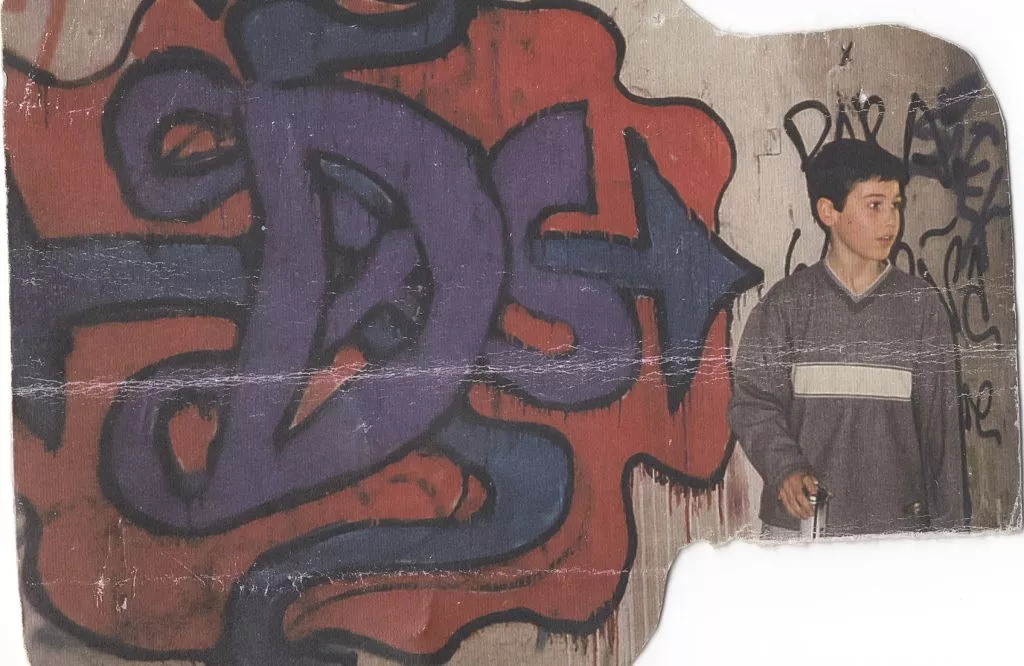


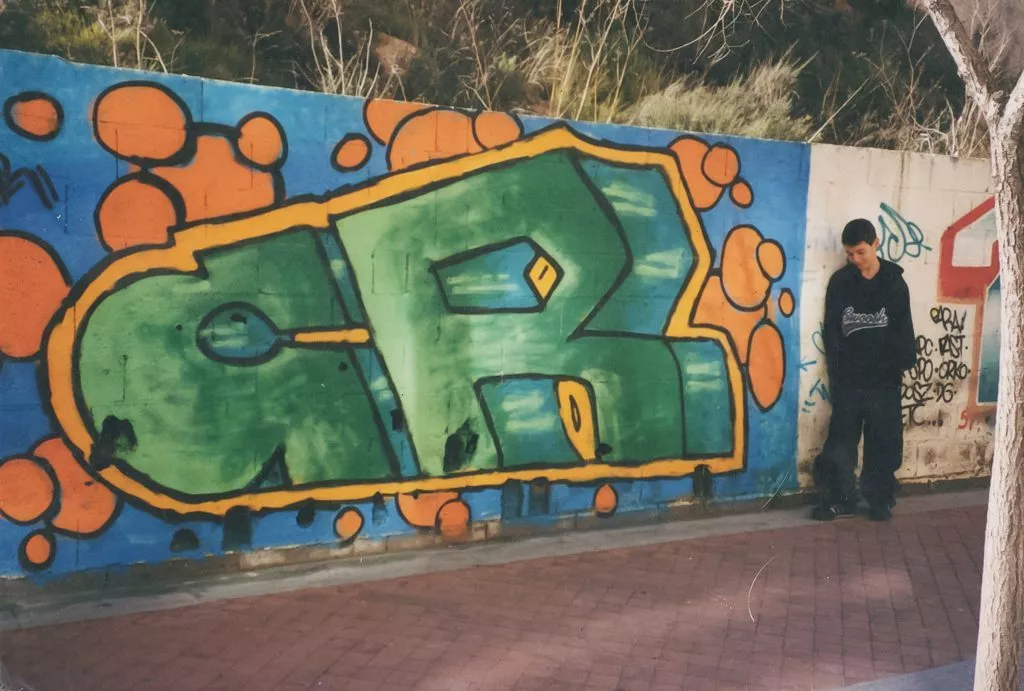
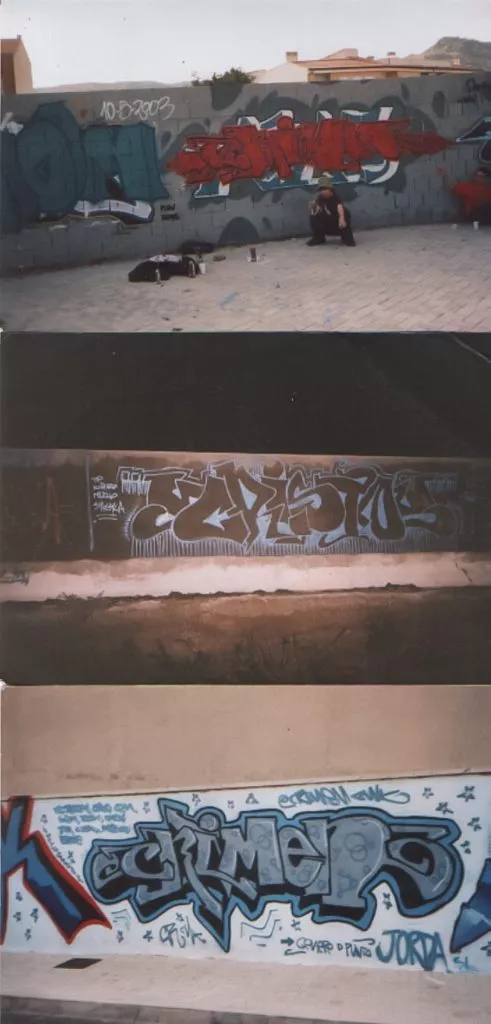
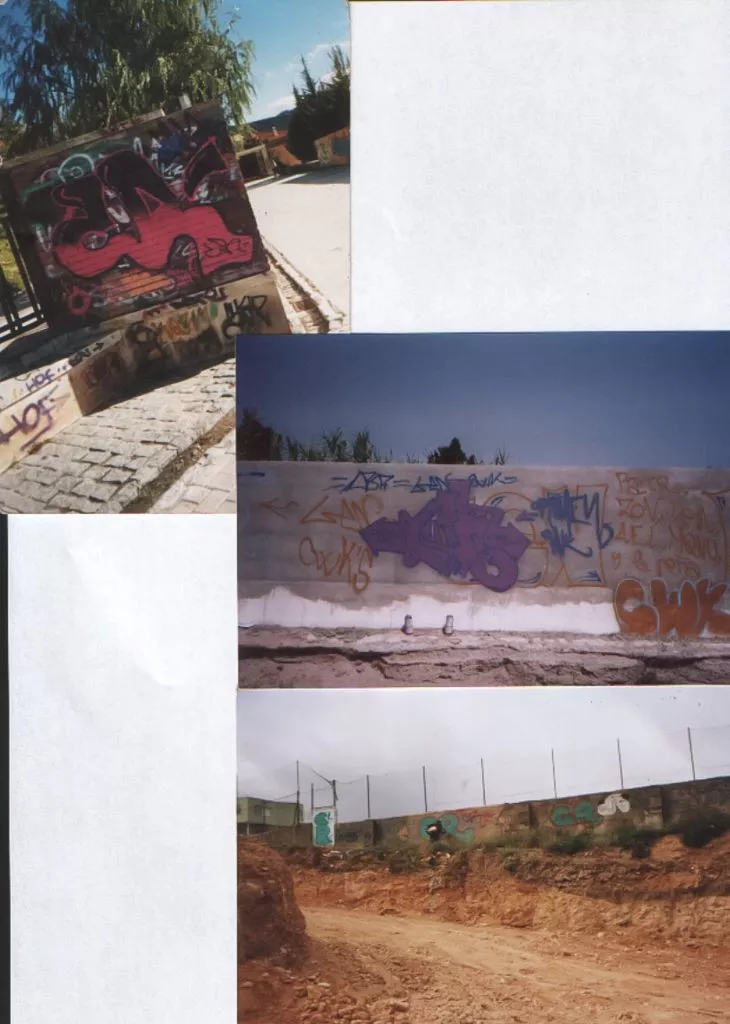
When Ceerre was in 6th grade, he bought spray cans with friends and started doodling on the doorbells of houses. Neighbors came to school asking for explanations, saying that someone had painted graffiti on their houses. That’s how he discovered it was called graffiti. In the computer classes he had access to internet, and found a thesis about graffiti in Madrid online, in reading it, he discovered what hip hop was. Not far after, he and his friends started tagging frequently for fun. Alcoy was full of graffiti at that time. When he met Meñe, a female writer, she took Ceerre to an abandoned train station where he painted his first graffiti piece, in 2000/2001. His first names were Skary, Gabo, DS, Nose, DADO… 54 counted, until he started using Cruel, the ancestor of CR (Ceerre). He mainly painted in an old train station of Alcoy, a large railway complex, but also in factories, abandoned buildings, under bridges, and at Cantagallet Park.
Besides graffiti writing, music played a huge role as well and still does for the visual artist. He started producing because of hip hop. When he started rapping with some friends, they needed beats. So they released their first demo aged 12 with a keyboard loop. Later, he started to get into producing with software, he was 14 years and created beats every day.
Concerning graffiti wiring, in the beginnings, Ceerre was influenced by graffiti writers like Musa, Dibone, and Dran. Later on, by ONG crew and Yann L’outsider. He was active in many crews over the years like PG (Pequeños Graffiteros), KNG (Kids of Nation G), CWK (Crimes on da Walls Kru), RAKSHAS, Mancos and WC (Wild Cans) until 2013. What Ceerre enjoyed the most at that time was tagging. It has given him the most pleasure and also caused him the most problems, he says today. But also the search for places to paint pieces was a very satisfying activity. Sneaking into places, investigating, finding a way, being the first to arrive. Interacting with the location. Establishing a dialogue with the environment. All those things taught him a lot, Ceerre realizes today. The places he liked the most were the ones that nobody had discovered yet. He liked large constructions, places where he felt small and like a king, alone in there. For him empty buildings are like magical places:„They have an archaeological component, a history and inhabit the moment when they stopped being used. Especially factories. They are like silent cathedrals open to any idea, no matter how crazy it may be“.

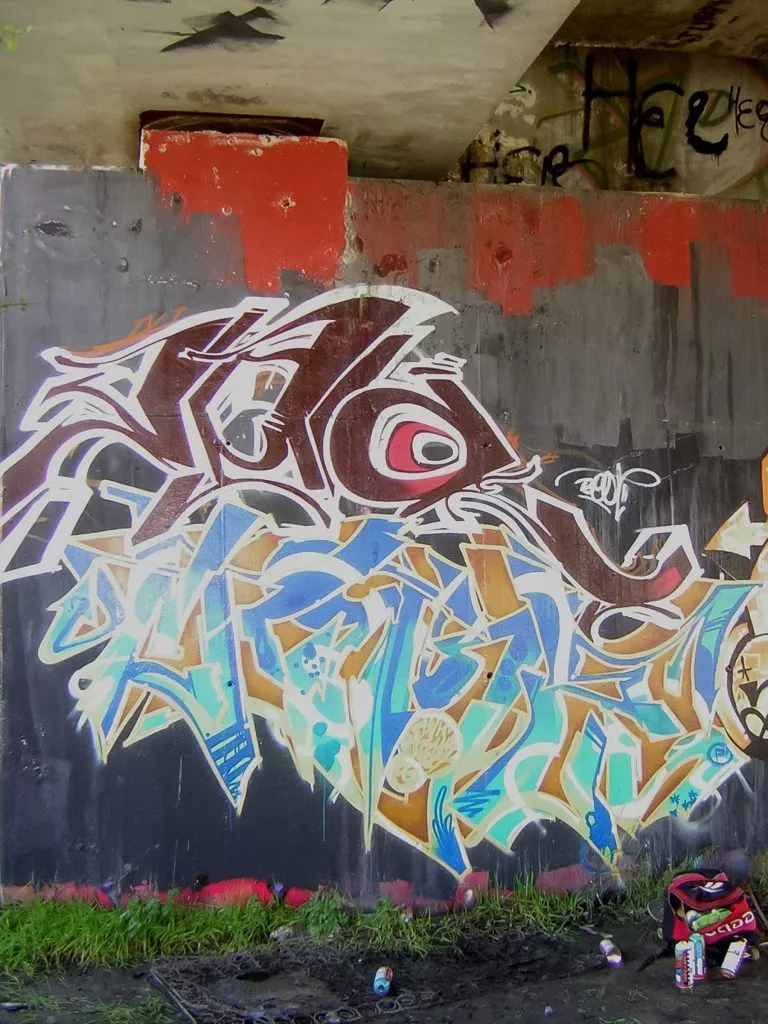
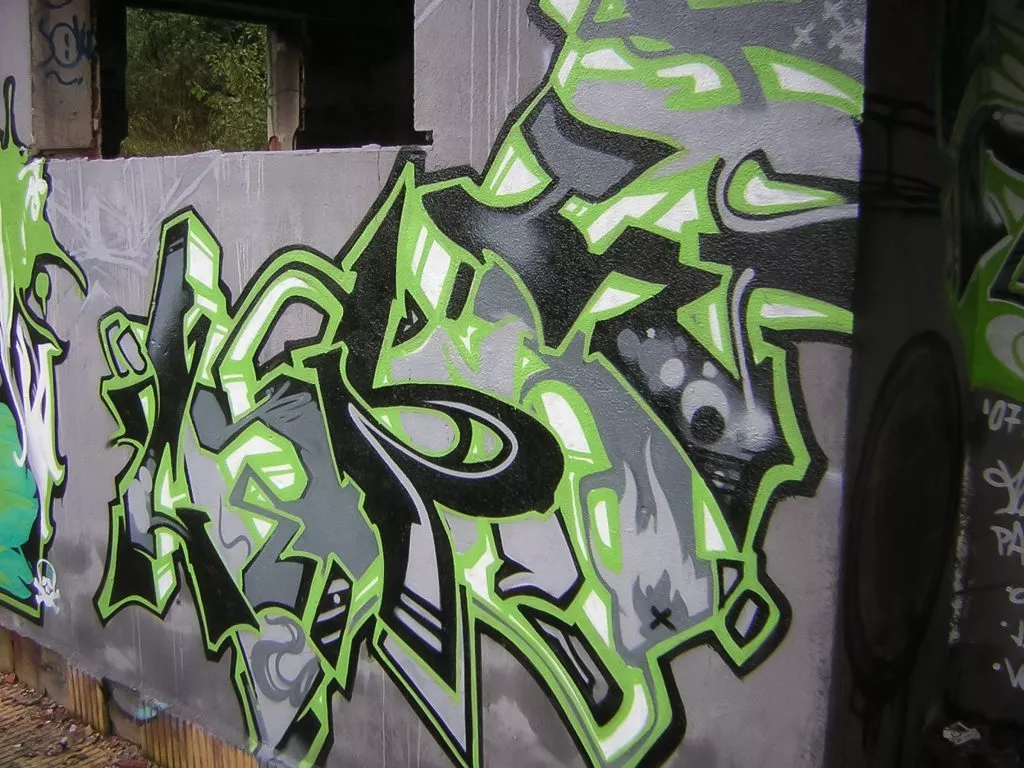
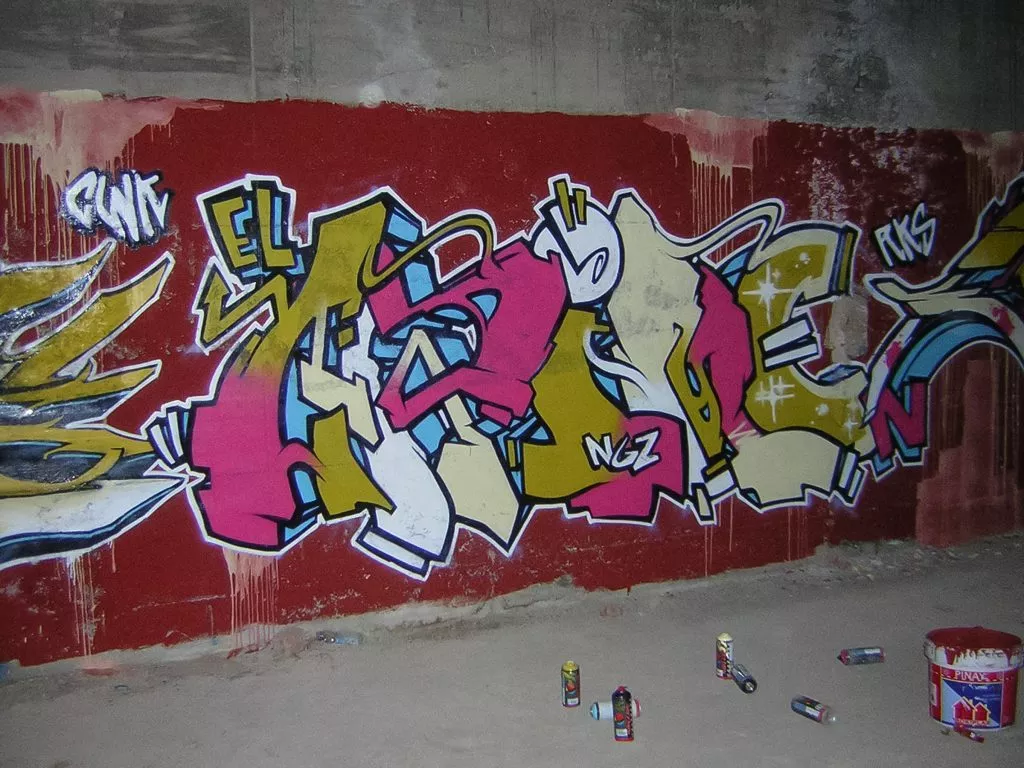
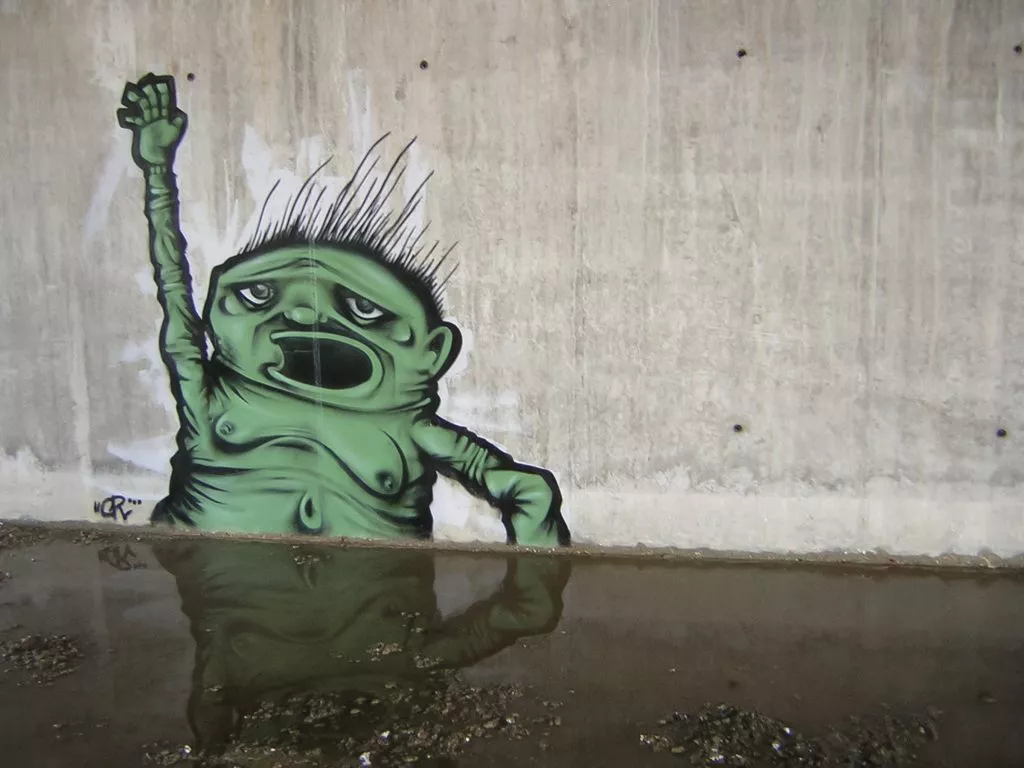




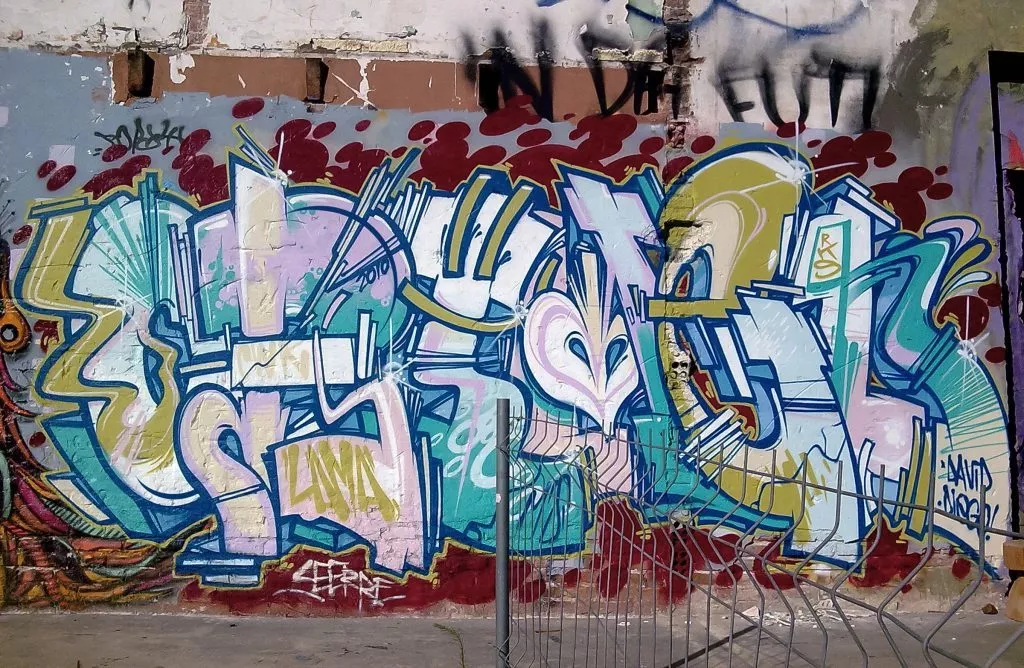
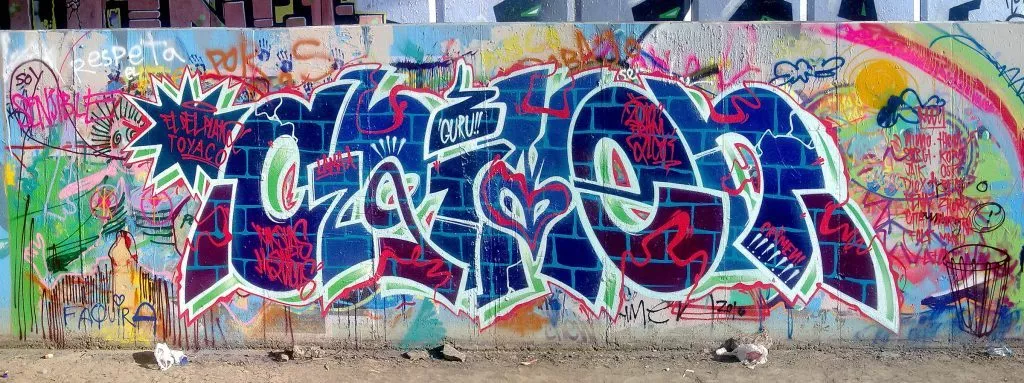
Sources of inspiration and art studies
In the first years of graffiti writing practice, Ceerre alternated between letters and characters in different styles. Besides, in 2009, he was studying Illustration at EASD Alcoi. He started a deep interest in characters from Spanish comic authors in 2012 such as Vázquez, and from the Bruguera publishing house. He also became fascinated by the Spanish underground comics of the 1970s, mainly from magazines like “Revista Star” and Vall Editor. From then on, Ceerre started to create series of wall paintings that leaned towards abstraction, with themes that he found interesting. He improvised with a few colours based on comic books. Later, in 2014, he started developing his own abstract language through music and the use of synesthesia. He had been producing hip hop and experimental music for years already and had the ability to see sounds, and to create music thinking in terms of spaces and colour-sensations.
A bit later, he developed two abstract series based on musical perception: Etane Sissy (2015) and Alba (2016). „In the first one, I focused more on rhythmic and percussive factors, characteristic of musical authors like Autechre or Aphex Twin. While in the second one, I sought a formal minimalism that represented the sonic landscaping typical of ambient music, and of musicians like William Basinski or Tim Hecker. For this, I spent 4 days in the Monegros desert where I dedicated myself solely to sketching while listening to that music. The choice of methacrylate as a material responded, among other things, to the possibility of compositional reformulation. Each piece became a palpable element that could be recomposed infinitely until I decided to fix it. I also wanted to explore in depth the ideas of Kandinsky expressed in his “Point and Line to Plane.” These two series have been the foundation of practically all of my subsequent work“, Ceerre analysis today.
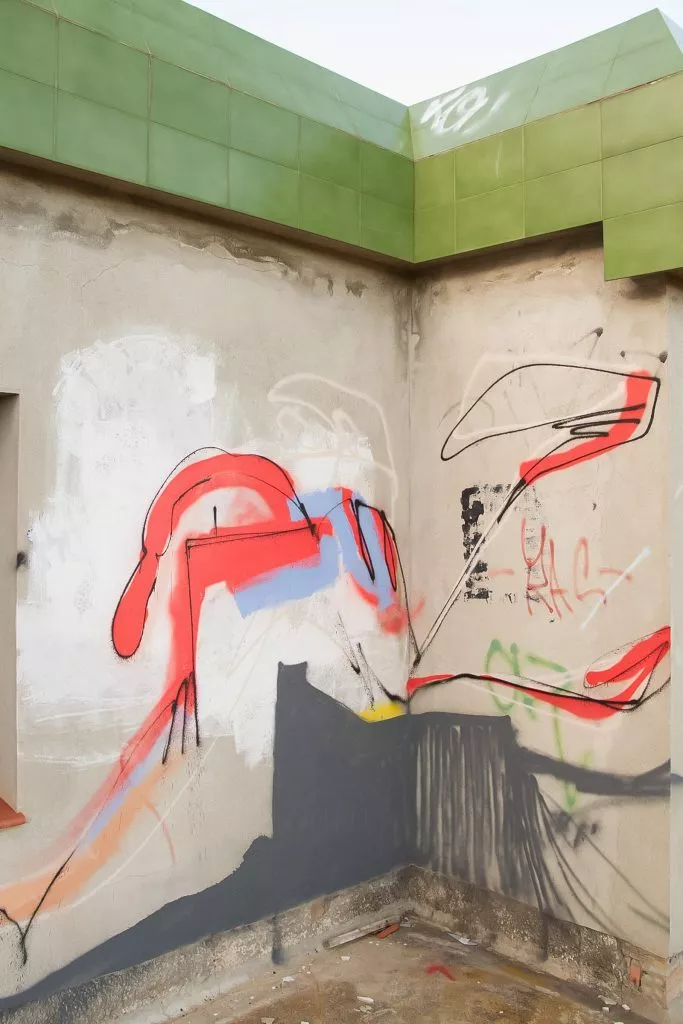

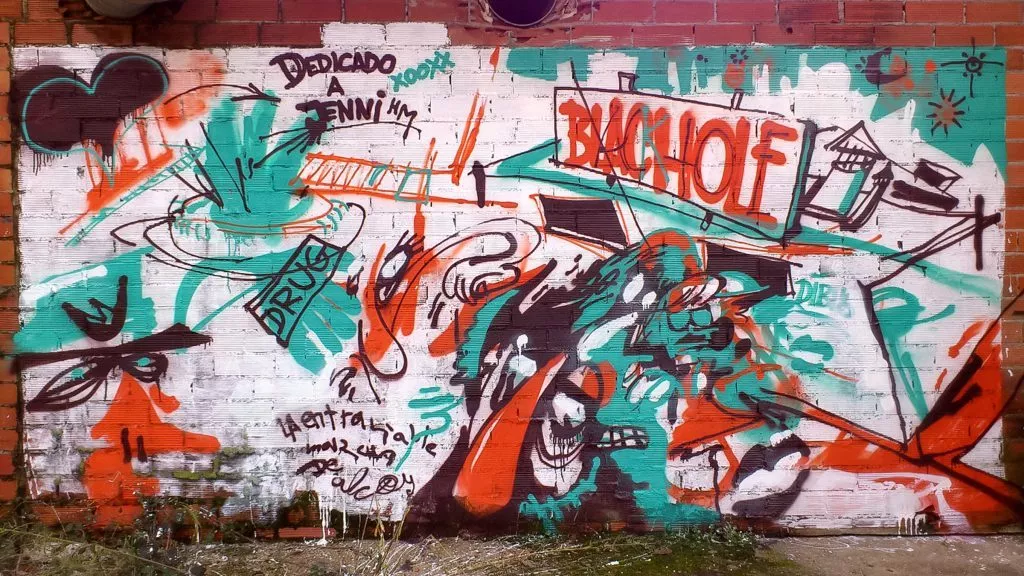
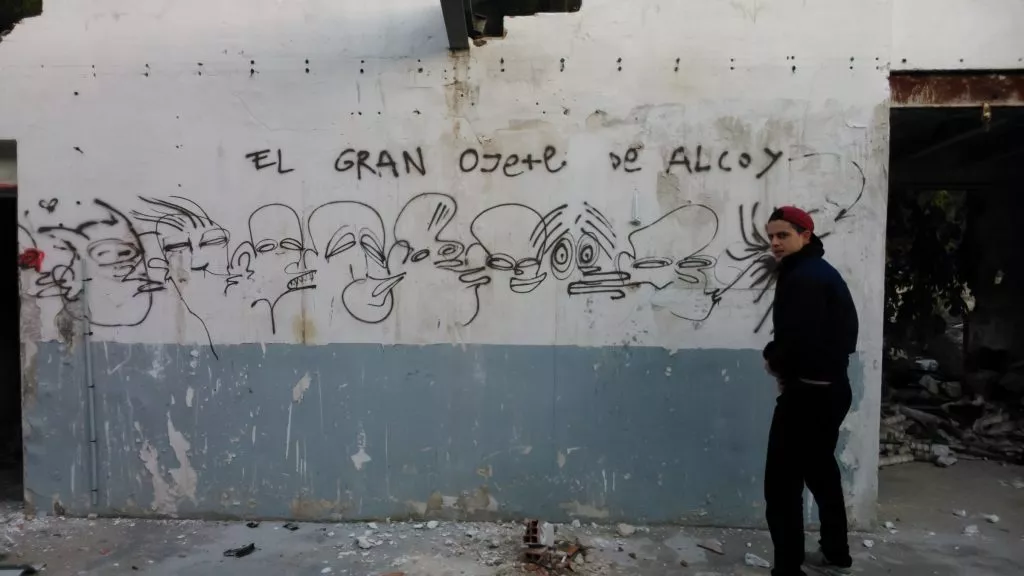



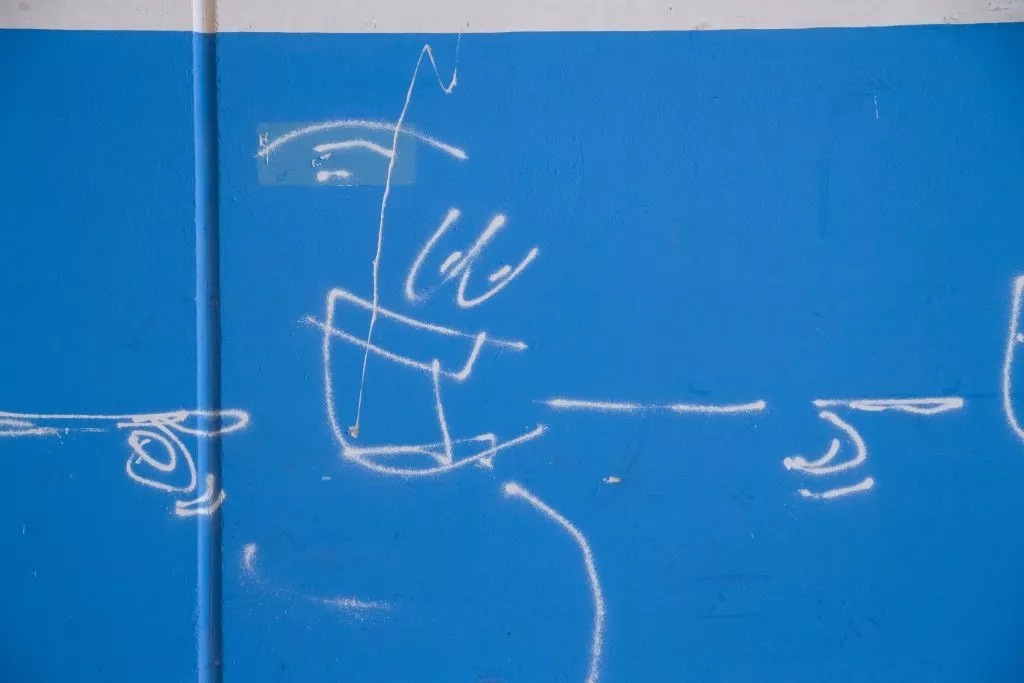
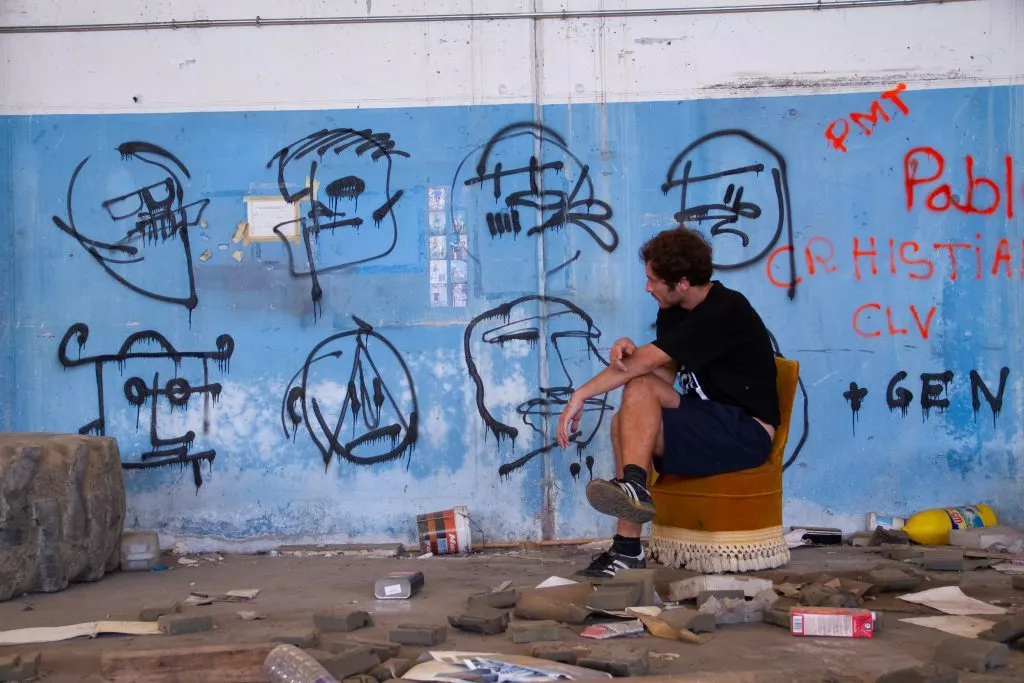
Studying graphic design in 2014 in Barcelona, in 2016 at the classes of Visual Arts and Design for Mural Arts in Escola Massana for one year, he went in 2017 to the Advanced Painting – School of Visual Arts in New York. In 2019, he tried out the BFA – Gerrit Rietveld Academie, Amsterdam, NL, before finally studying painting in 2020 at UPV/EHU in Bilbao in Spain. From all those studies he learned different aspects, but today he thinks, that mainly the countless conversations with other artists and visits to their studios have been invaluable. During those years of apprenticeship, also gaining knowledge of history of art, he discovered modern and contemporary artists. Abstract Expressionism of the late 1940s, with iconic works such as De Kooning’s black paintings series or Gorky’s later works, impressed him. When he lived in Amsterdam, he frequently visited the Cobra Museum. Miró’s series of musical paintings had an impact on him. But Ceerre also names Tàpies, Dubuffet, Brassai. Or Martha Cooper’s “Street Play” series, Rhoda Kellogg’s work or Oldenburg’s soft sculptures, Basquiat’s drawings, Garrell’s structures and contemporary artists such as Guillermo Pfaff, Sterling Ruby, Luce, Joe Bradley, Damaris Pan, Susan Te Kahurangi King, Eddie Martinez, Christopher Wool, Julie Mehretu and Rudolf Stingel. Over the years of artistic practice and personal development, in a process of self-discovery and questioning, Xavi Ceeerre started to become more and more interested in spontaneous art and children’s drawings.

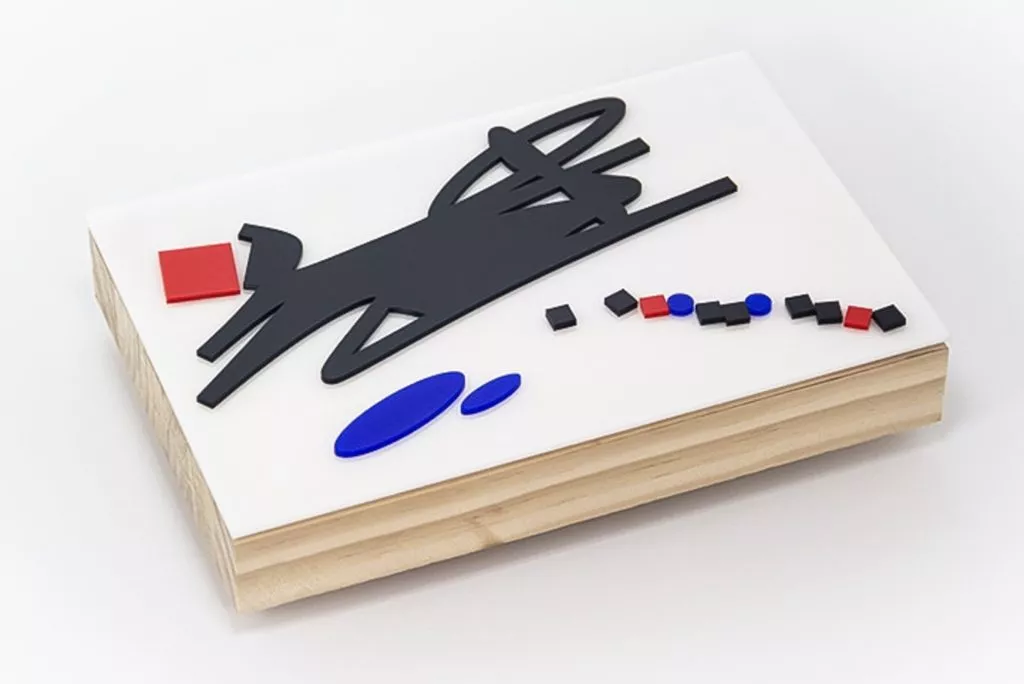
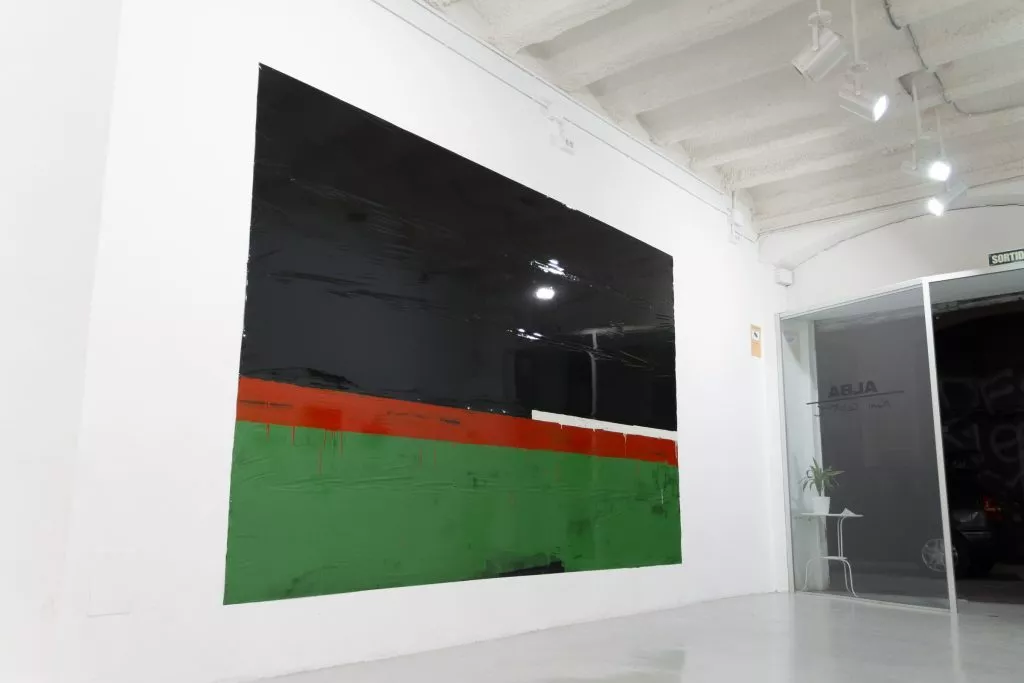

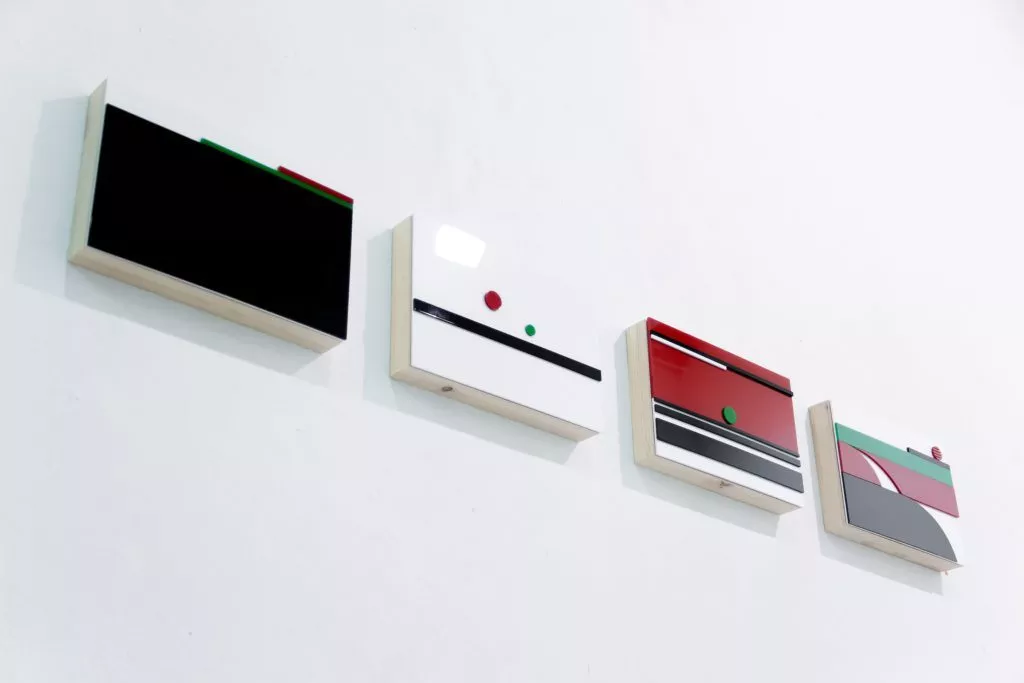
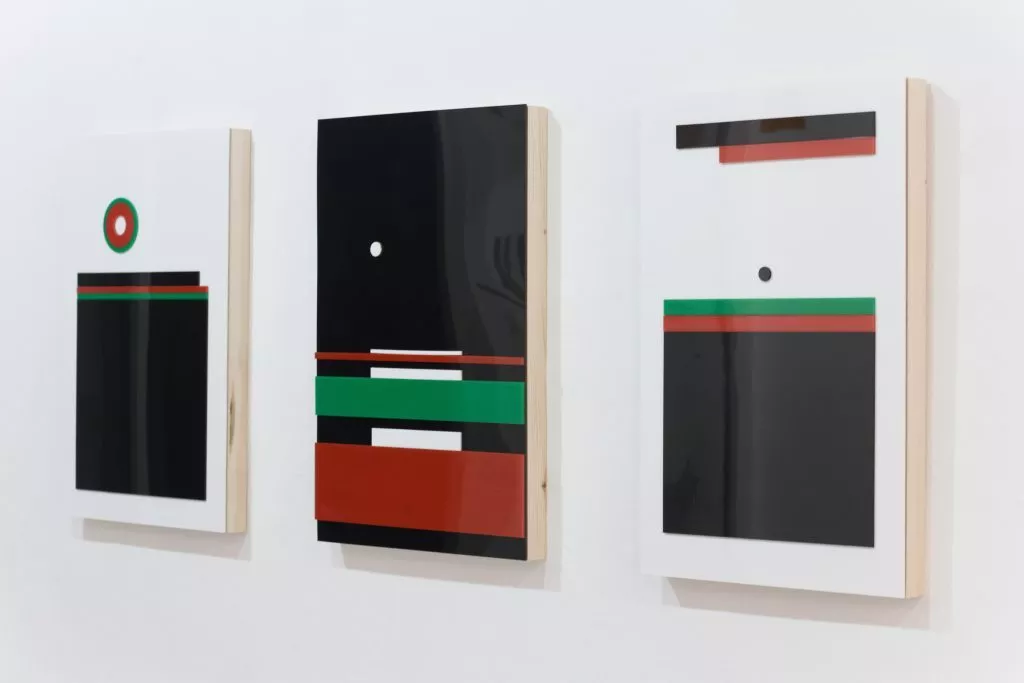

Methods and techniques
Drawing and sketching is still important for the Spanish artist. For him, drawing has a fundamental quality that sets it apart from painting. This lies in the possibility of making strokes of an undetermined length. In painting, the possibility of the stroke lasts as long as there is paint on the brush; in contrast, drawing allows for much better recording of movements. This also happens with graffiti. And with grattage, he explains. Some of the canvas he starts from drawing. This can remain or disappear during the completion of the work. Or he starts from simple block compositions or from blotches. Others from freestyle. Other mechanics have their origin in the street. Erasing and overlaying elements, painting something to then cross it out and continue working on it from fractions that were exposed. Or removing upper layers to rescue hidden drawings. It’s an almost surrealistic method, according to Ceerre. Sometimes on canvas, he starts with fast and spasmodic gestures that he can’t control. This type of rapid drawing must be related to tagging and throw-ups, he says. He really enjoys freestyle, like in rap, and whenever he can, he improvises. To do so, he establishes some parameters in which he can move more freely. Other times he builds images from chaos. From noise.„Maybe it’s a remnant of graffiti, where you usually paint on surfaces that have already been intervened, or of subtractive music synthesis, where you work from noise and filter frequencies looking for a sound. This doesn’t mean that everything is out of control, but I try to stay focused and let decisions come from within.“ Ceerre says. To obtain a sense of movement, he also uses the expressive capabilities of basic formal elements like rhythm, repetition, asymmetrical compositions, leading lines, inclination. For the artist, gesture has the ability to express ideas, emotions, or intention, and can even be an expression of style. He explains: „Over the years, due to repetition and muscle memory, a series of unconscious gestures emerge, which we could call learned gestures. They coexist with involuntary gestures, which arise spontaneously in us as a result of some emotions or other reasons. The artist can become aware of this fact and start a conversation with their own gesture through the denial of the learned gesture. This process of depersonalization seeks to eliminate, or at least detect, those gestures I mentioned earlier in favor of a more archetypal or universal gesture. This can generally be achieved through the obstruction of the gesture. Mechanisms such as speed, the use of physical barriers, holding the brush incorrectly, or detachment, such as blind drawing, can be used for this purpose. All of this inevitably leads us to the gesture of erasure. The gesture of destruction. The dissolution of identity. The struggle between the individual and society. The anonymous gesture. The non-gesture. But the funny thing is that this action involuntarily generates new gestures full of expressiveness that both I and other artists like Stephen Burke or Nils Jendri find interesting to rescue and push to their limits.“
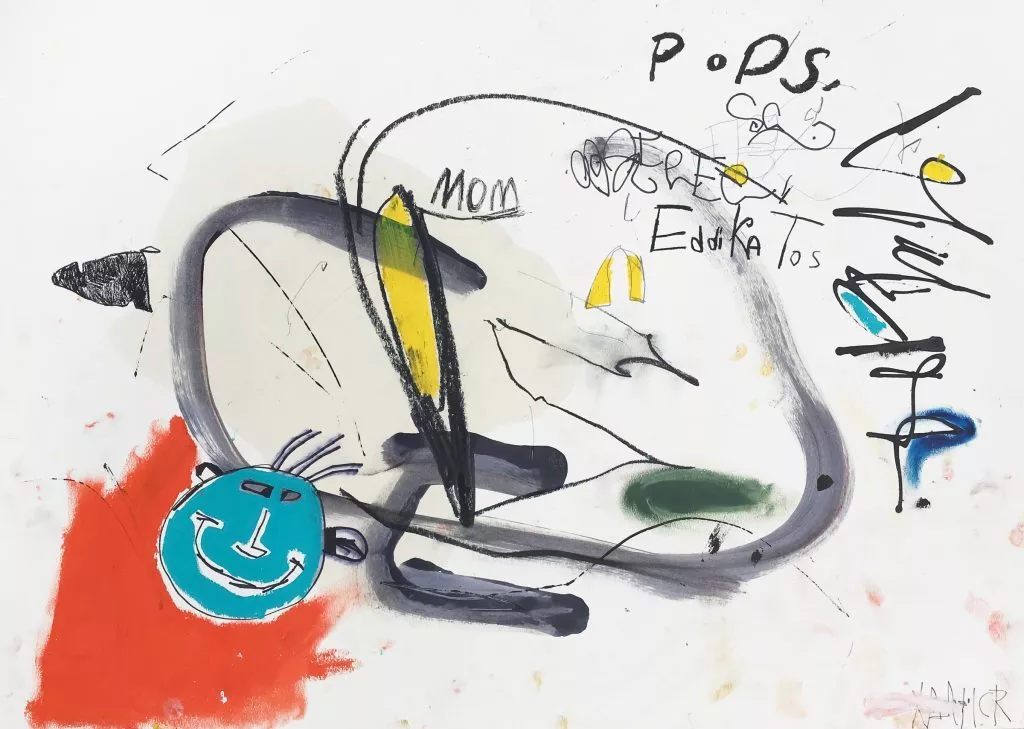
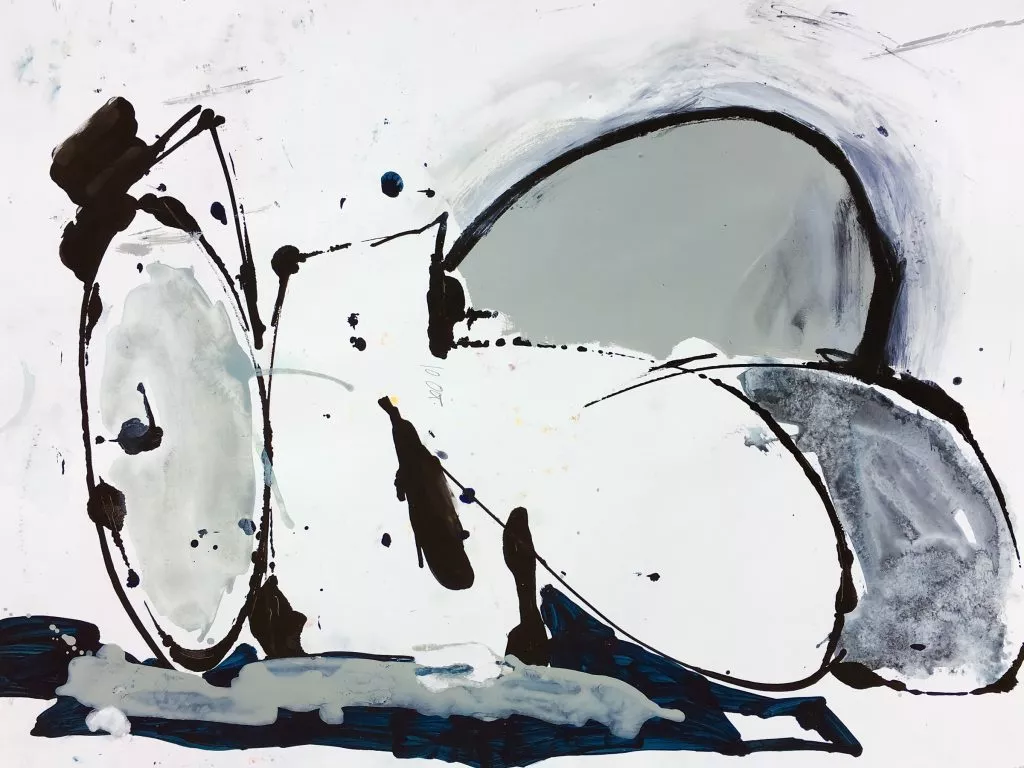
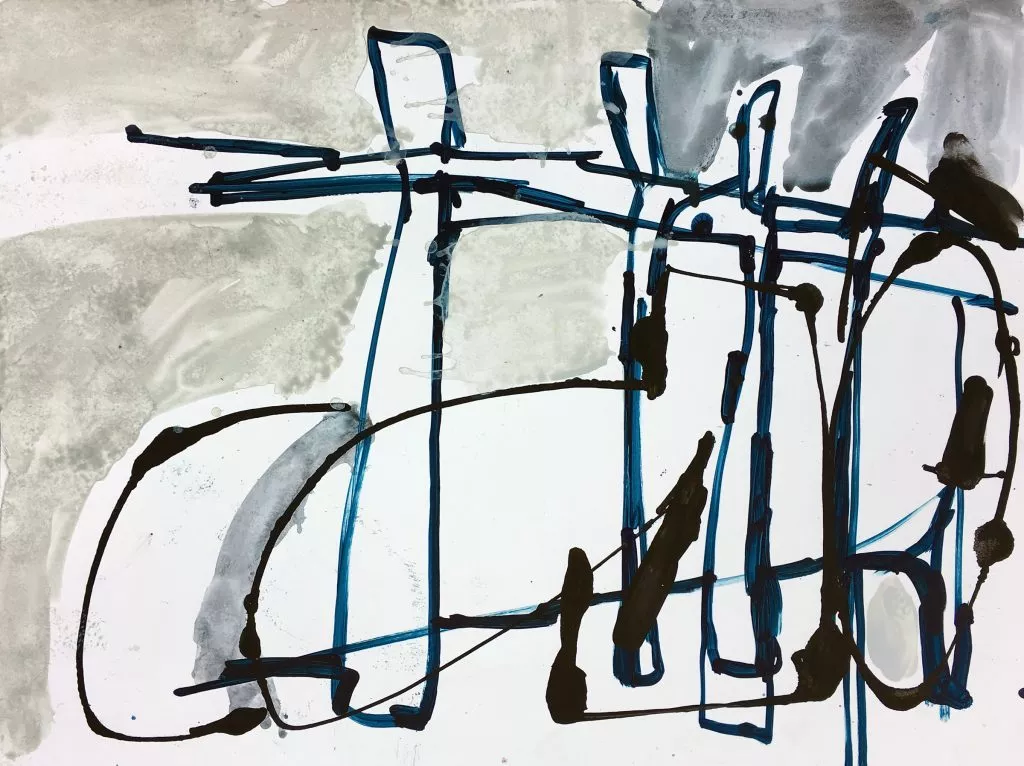
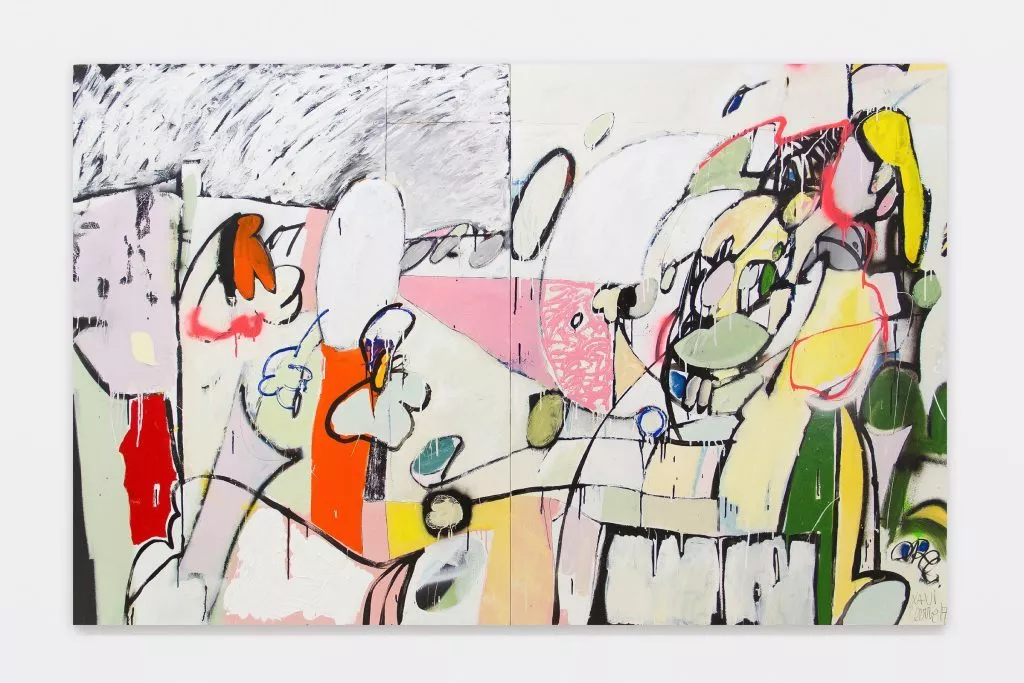


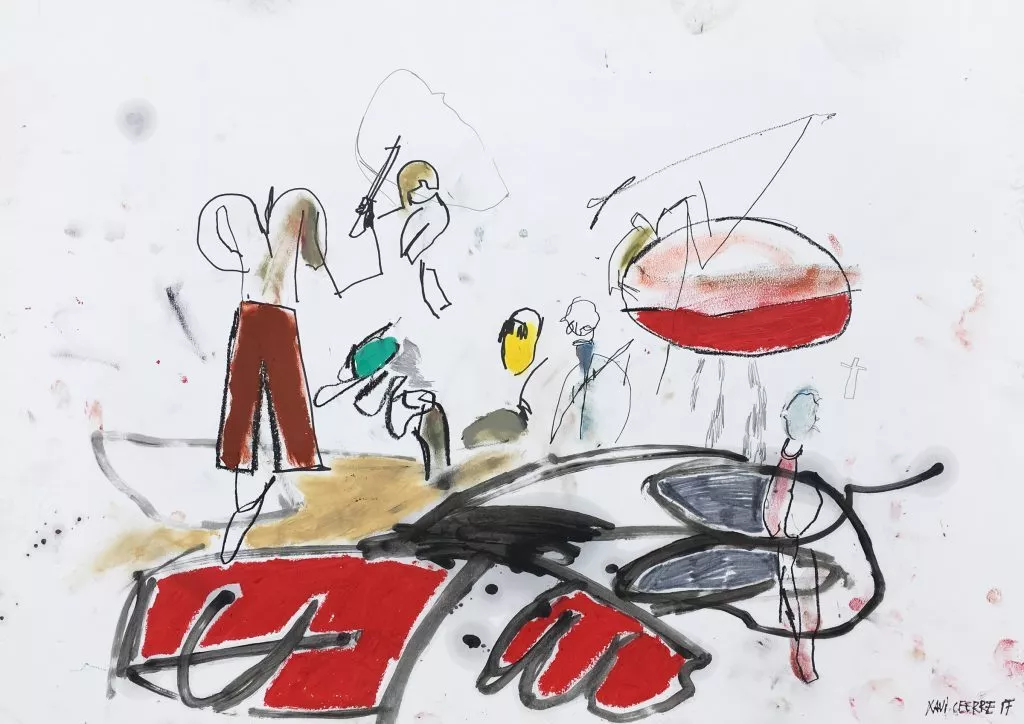

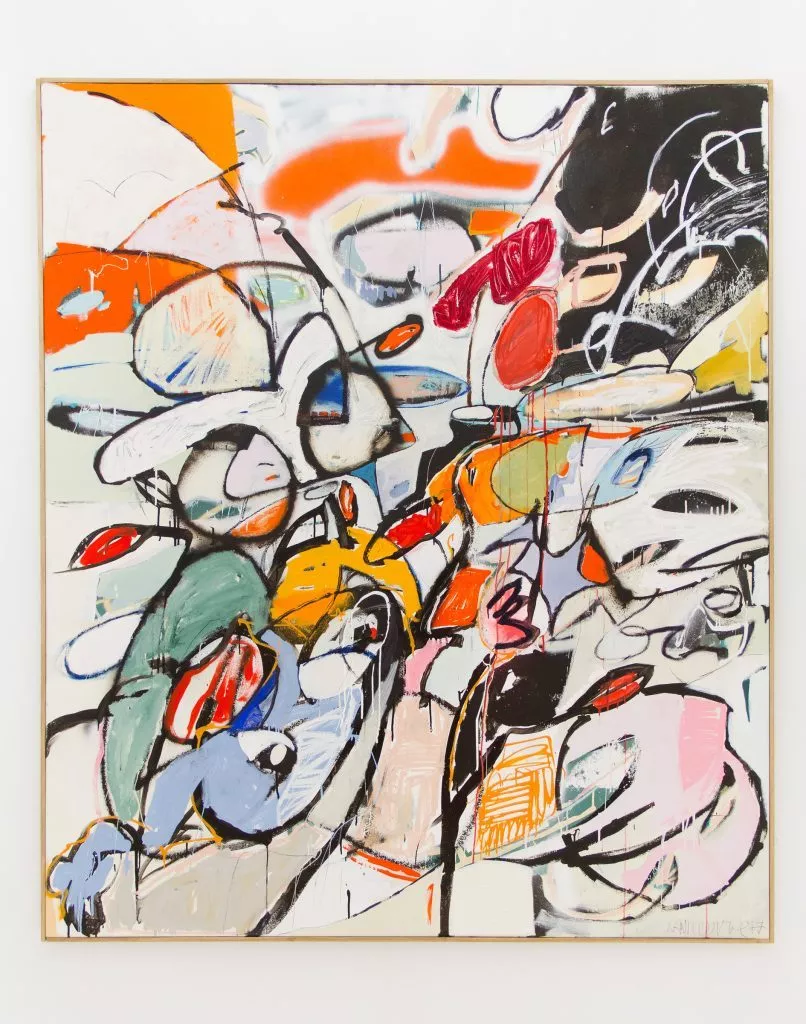
Concerning the colour choice, he says: “It goes through phases, like suddenly there are colours that resonate a lot with me. I imagine that colour has more to do with the emotional or energetic aspect, so it must be influenced by that. “For finding new shapes, he has no specific method, but thought a lot about it: „ How shapes are capable of containing a personality. Almost from a graphological point of view. There are shapes that arise from muscle memory or unconsciously. They are the result of many years of repeating gestures, as an illustrator, writer, or artist. They are schematic shapes that relate to elementary geometry or graffiti. These are automatic shapes that I usually use as constructive schemes. Faster movements produce other shapes when strokes collide. This type of shapes is more based on motor skills and reminds me of doodling. There are also shapes based on the appropriation of images or on the abstraction of them. They may resemble the other two types, but they actually come from other images, from my personal archive, from what I find. Or formal residues that remain in my memory.“
Depending on the series he works on in his studio, he uses different techniques. Lately, he used decalcomania a lot. The result is a texture rich in nuances that reminds him of stone or plastic. In the series “Mur Mort, 2016-2024”, he used a technique similar to photographic development, in which he retrieves images from the lower layer by scraping and destroying the paint of the most recent layers. This technique is interesting to the artist because it is pretty unpredictable. The use of automatism can also be helpful. Sometimes he plays with gestalt figures, that is, incomplete shapes and figures that are open to interpretation. He searches for errors through obstruction techniques, such as drawing with his left hand or looking at a different part of the painting. For the series of drawings “New Singer Old Song,” he used charcoal that he rescued from a fire. He is pretty sure this material somehow conditioned the drawings he made with it.
Xavi Ceerre also creates objects and installations. He started experimenting with volumes in abandoned factories around 2014 with objects he found there to work within a three-dimensional environment and created compositions that work from various perspectives. For him, each material has its own characteristics and cultural significance. Working with volumes sometimes resembles to construction work, he says, reminding the work of his grandfather.
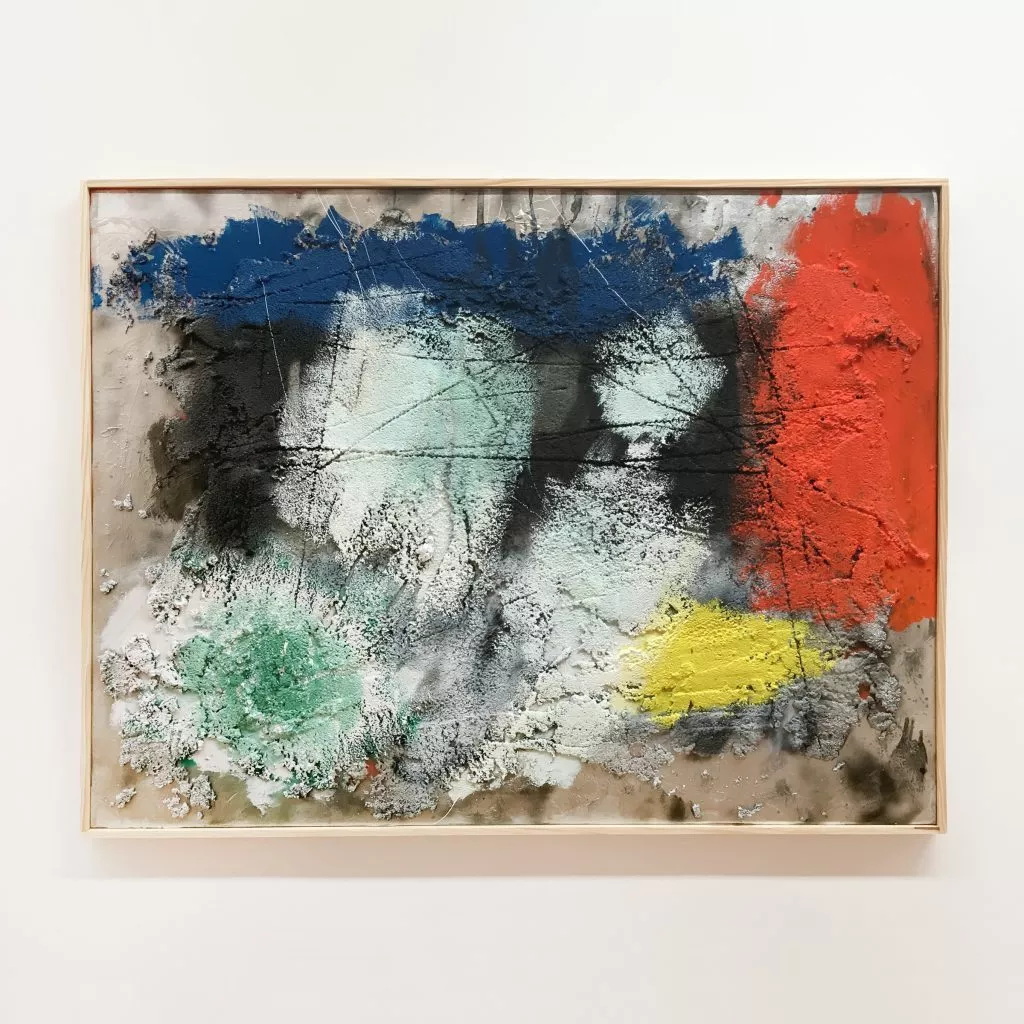





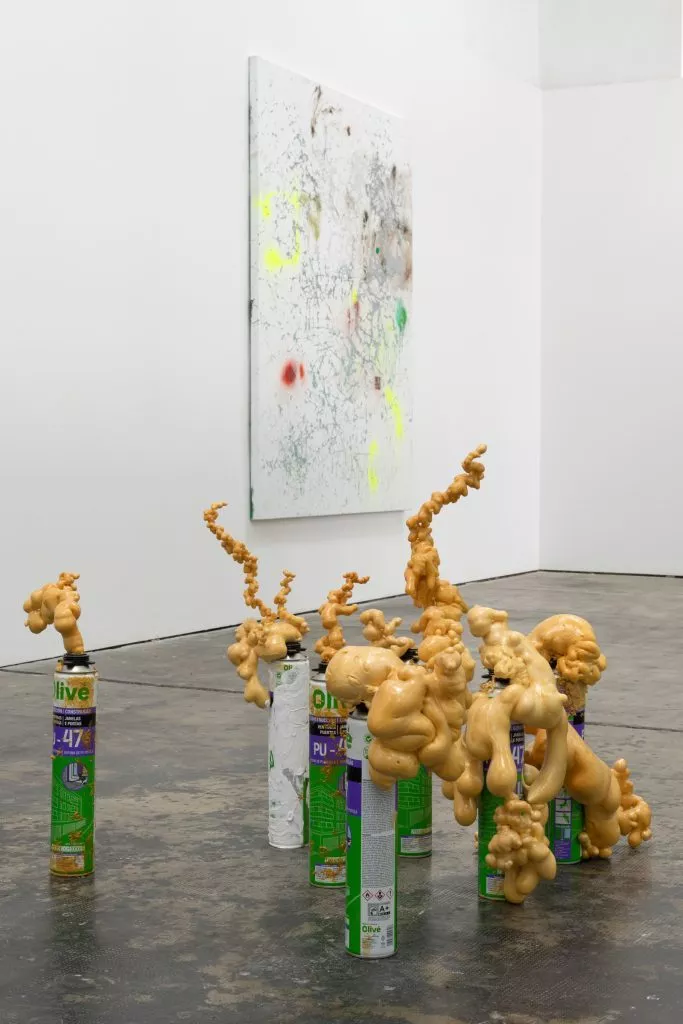
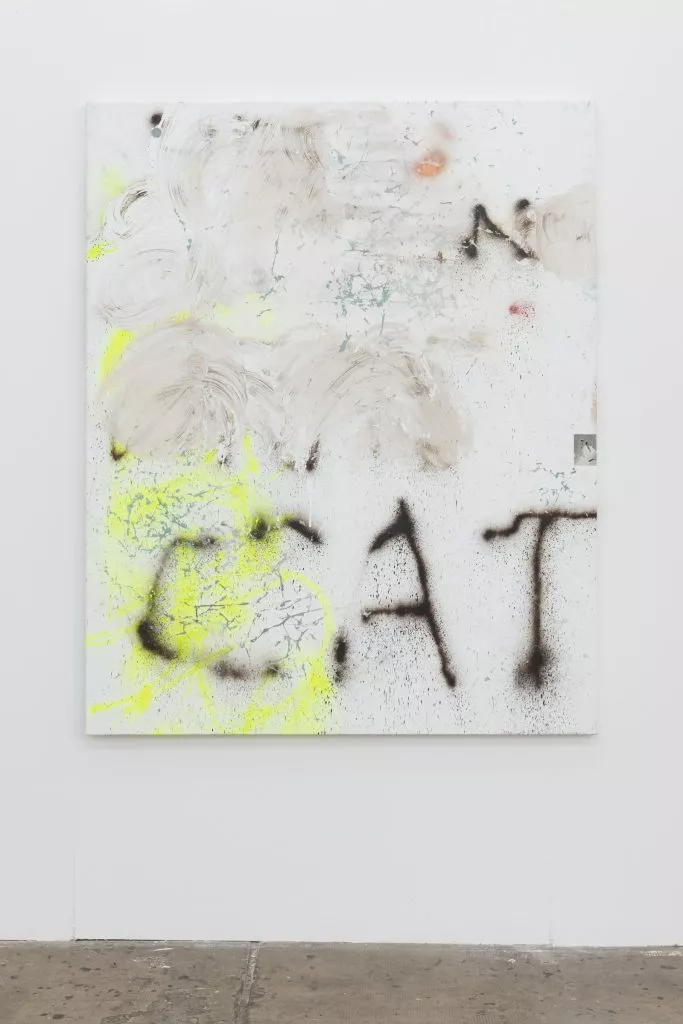


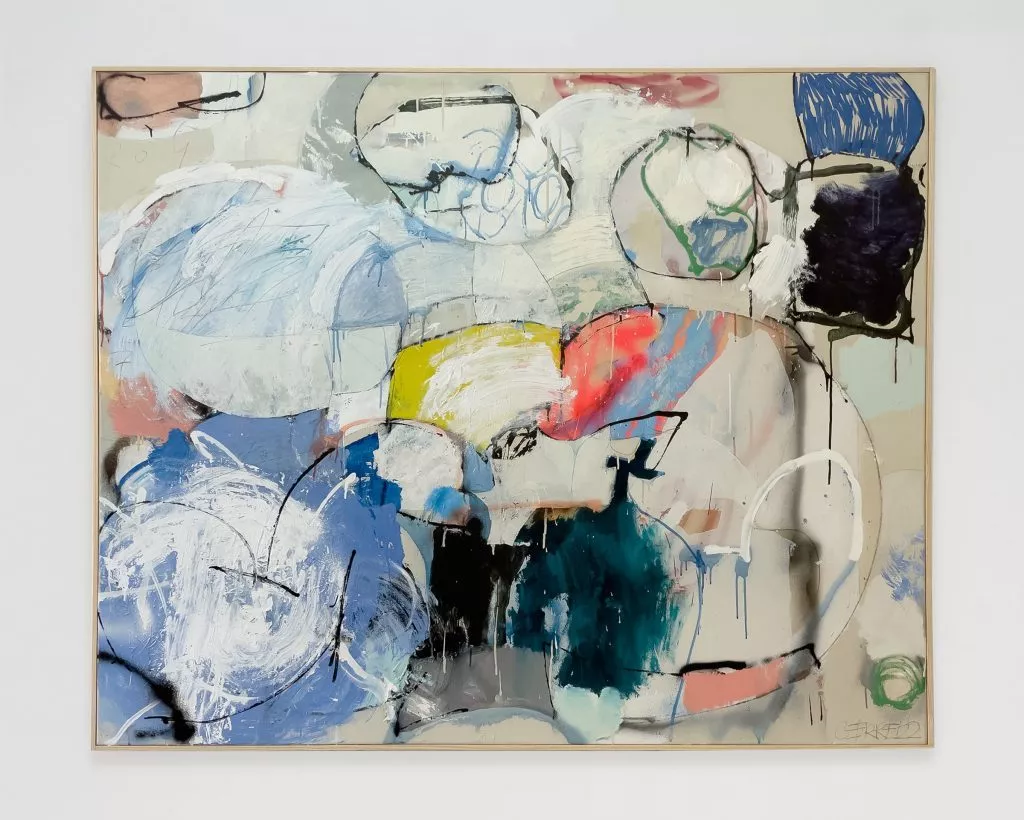
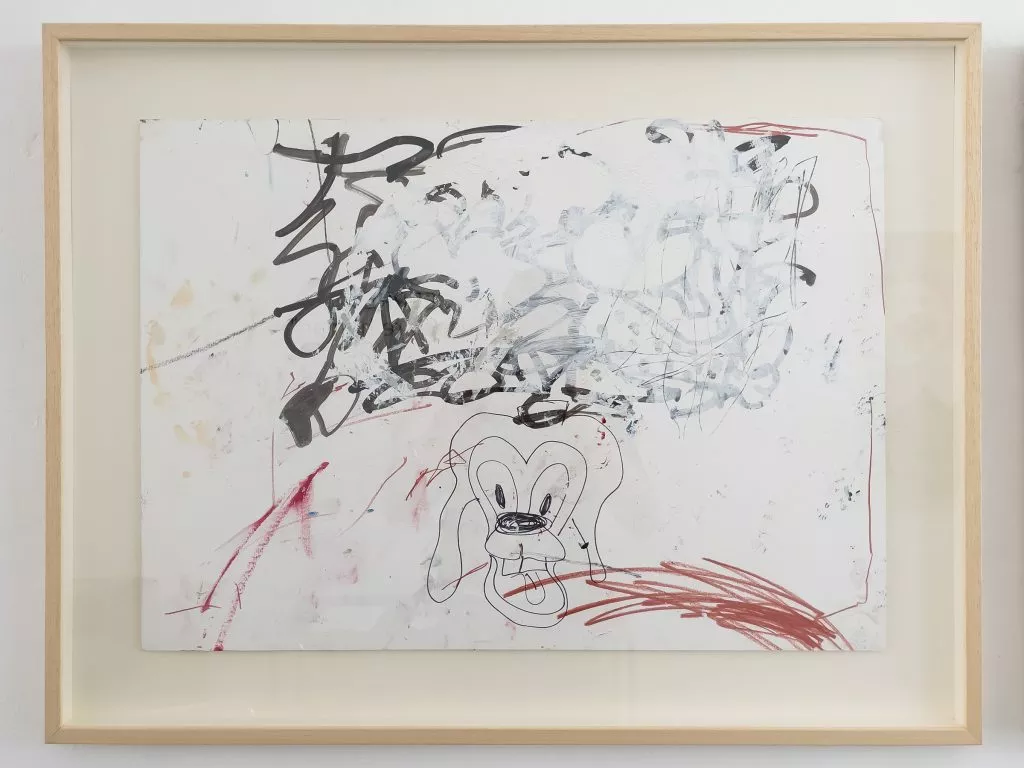

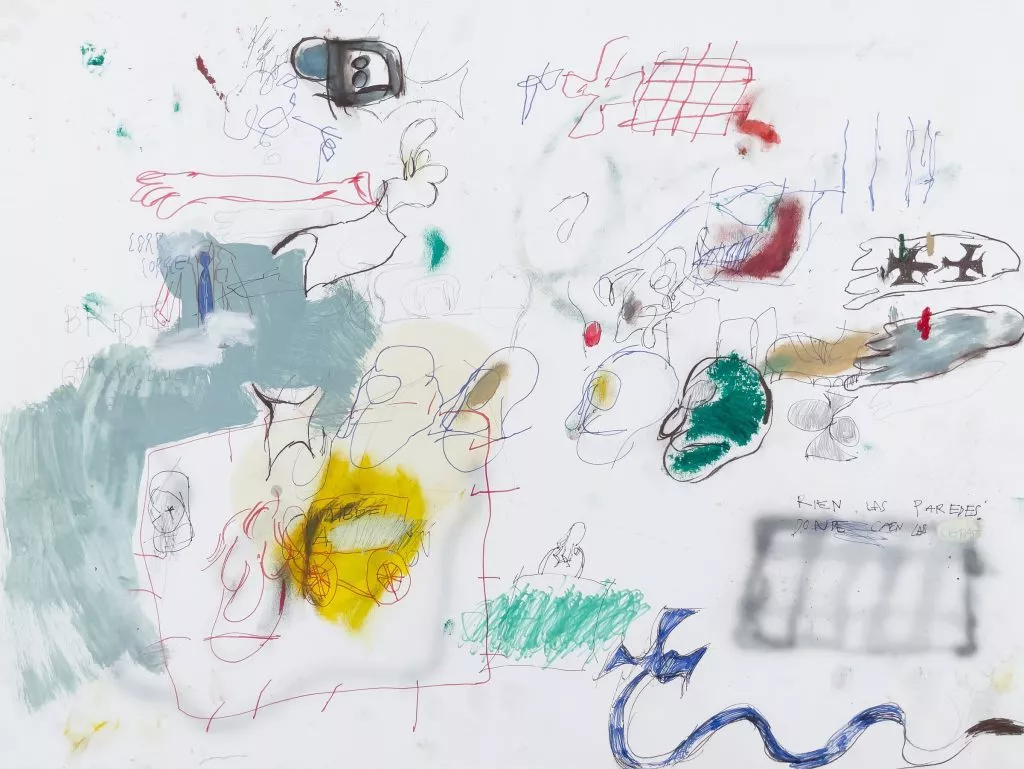
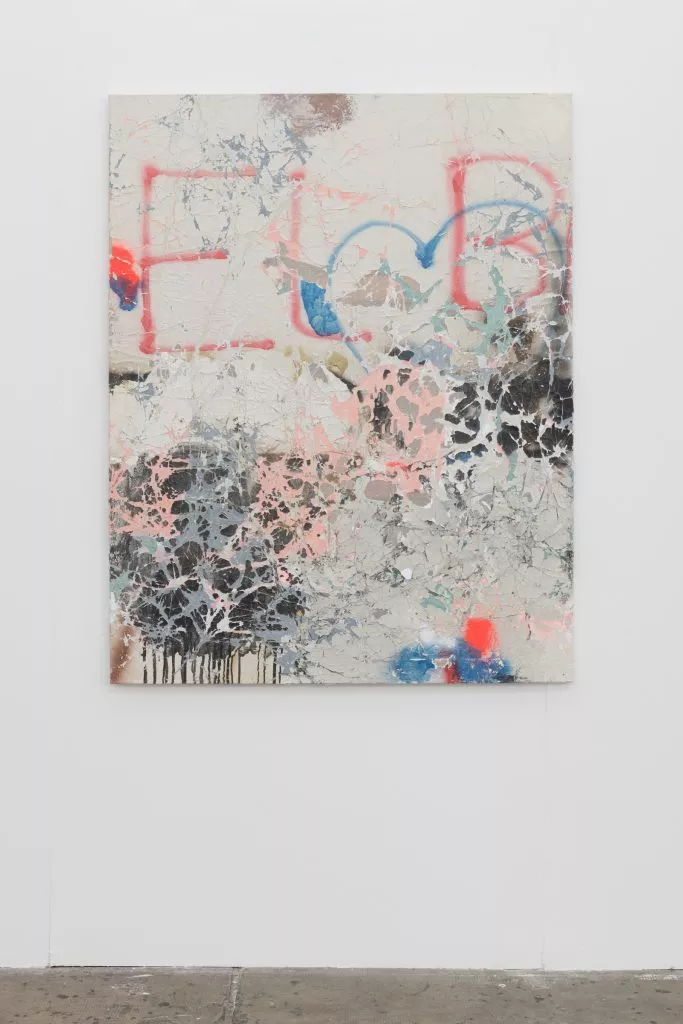


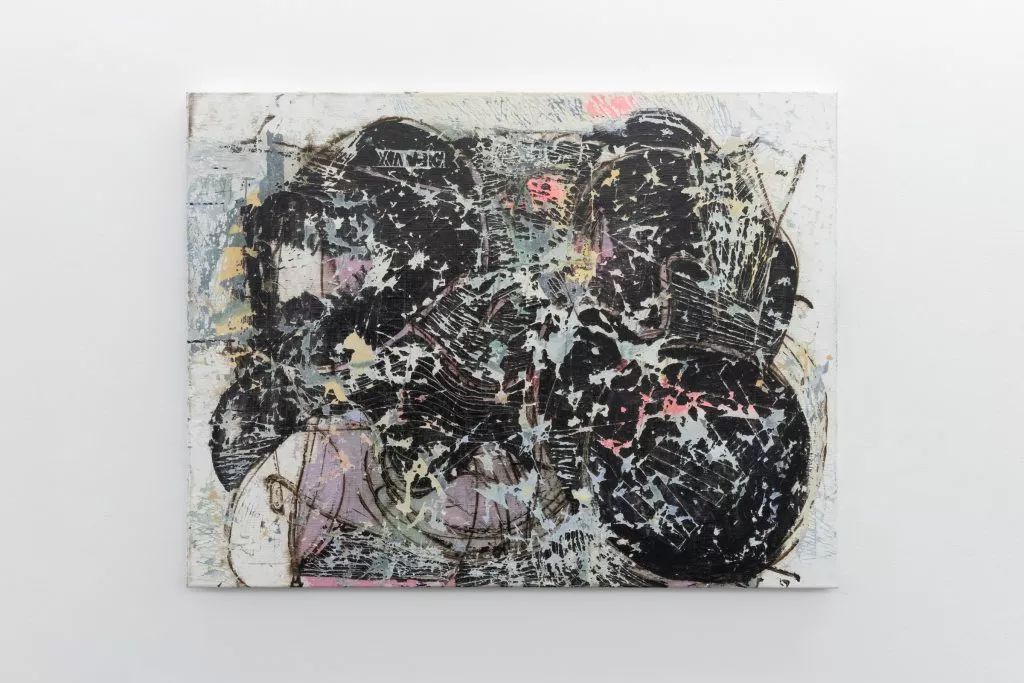


Abstraction lies as well in graffiti and in music
Concerning abstraction, Ceerre says it was a progressive process that crystallized in 2015 with the Etane Sissy series. But in reality, abstraction had always been there, for example, in Wild Style. There is a direct relationship between his early graffiti and many of the compositional schemes he still uses today. The circuit series, based on winding drawings of racing circuits and maps he made between the ages of 2 and 4, reminds him greatly letter graffiti. He didn’t realize this until several months after creating this series. And the relationship with music has also played a very important role. Gradually, he realized that graphic elements have their own discourse and don’t need to serve a theme. The choice of material, formal elements, the power (or psychology) of colour, the process. The interrelationships between one artistic language and the other are endless, according to Ceerre : “We find them in the language itself: colour, tone, scale, harmony, rhythm, repetition, movement, depth, saturation, texture, distortion, composition, and even formal values can be assigned to sounds. But it goes even further. Techniques like sampling remind me of collage or the appropriation of images. Or the mixing of colours bears a strong resemblance to musical chords.“ Abstraction is for him a language that uses its own means and very intriguing. „There’s no narrative, no theme, no message. The painting itself is the message and tells its story. For many centuries, painting has been subordinate to functionality. Abstraction is the clearest representation of that liberation, Ceerre ads. „And when I see a painting, I feel things that I can’t feel through other means. There’s a bit of haptic sense, a bit of wonder, a bit of awe. I usually put myself in the shoes of the artist. It’s hard to express, but as a painter, I seek that feeling all the time. I imagine that’s what keeps me painting still. I love it when I don’t understand anything.“
instagram.com/xaviceerre
xaviceerre.com
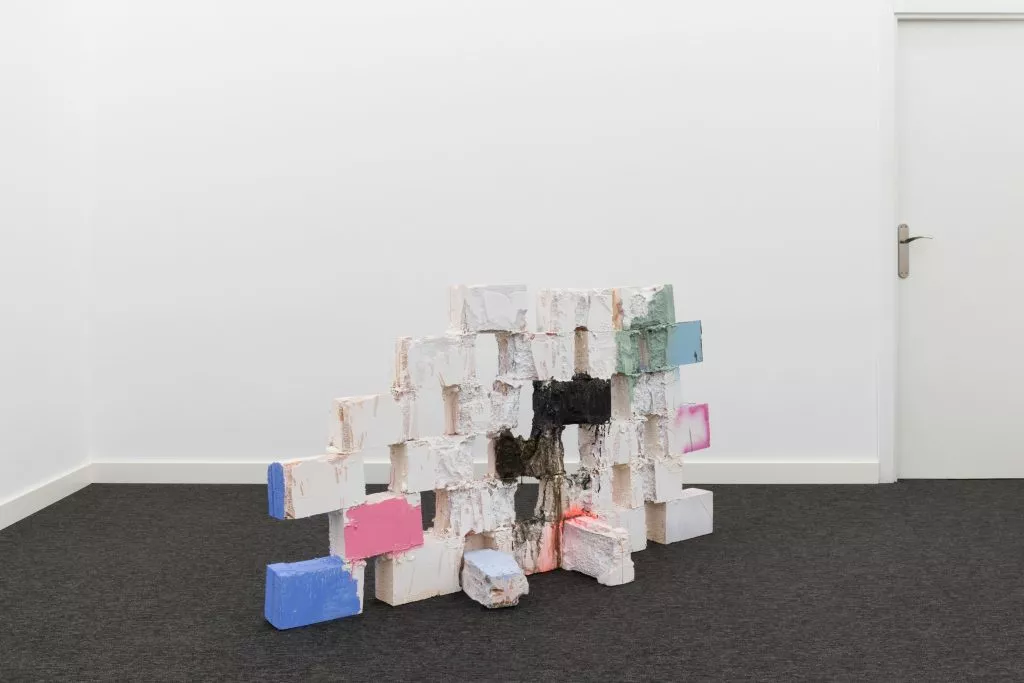
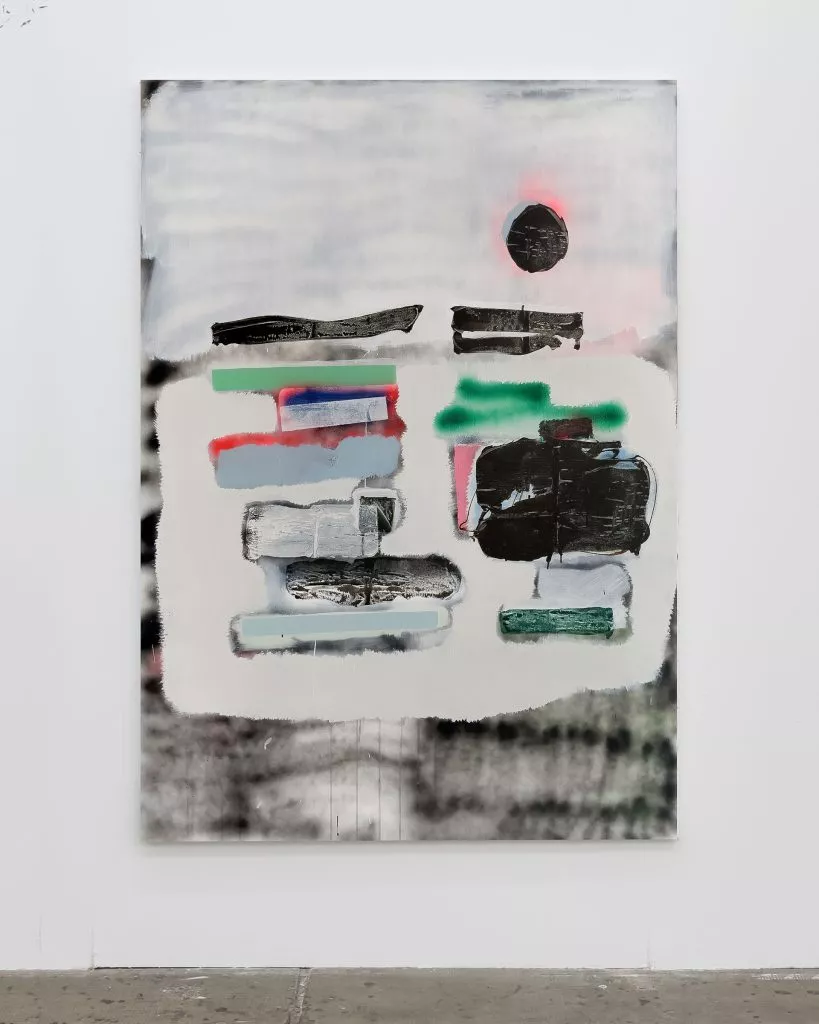
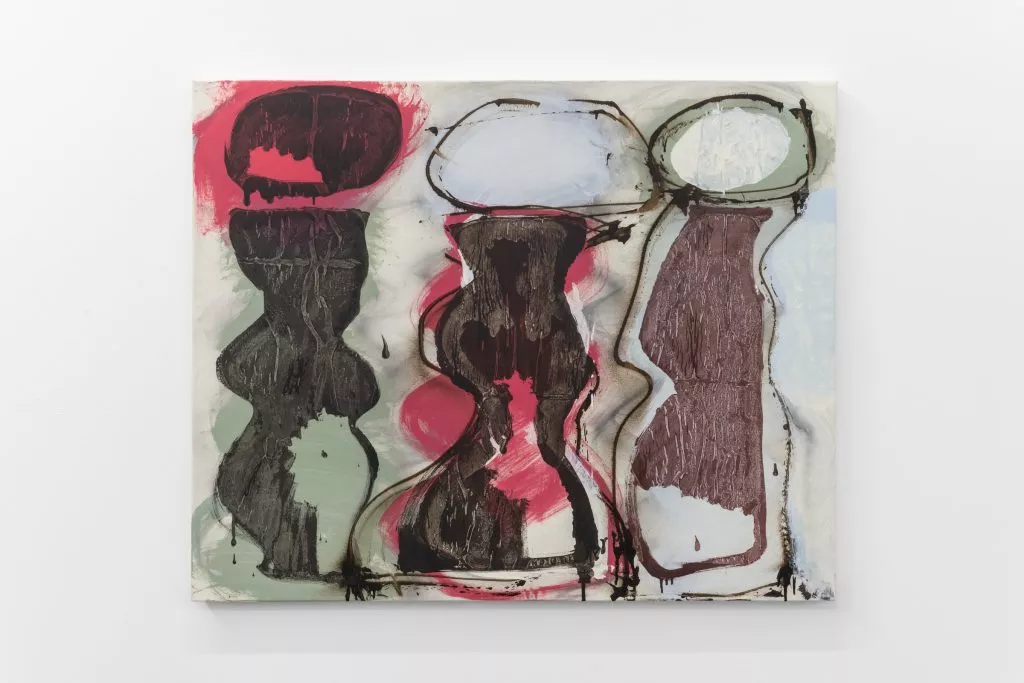


186 views
Categories
Tags:






Leave a Reply